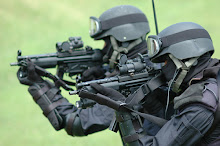Lockheed Martin's high-profile VH-71 presidential helicopter programme, designed to work in a pinch as a White House in the sky, has surged more than 50% over budget, the US Navy said on Thursday.
As a result of such cost growth, the Defense Department either must end the programme or certify that it is essential for national security and meets three other tests established by law.
The navy notified congress of the problem on Wednesday, as required by the so-called Nunn-McCurdy procurement law that can force cancellation of an arms program if unit-cost growth tops certain levels, Navy spokesman Lt. Clay Doss said.
The cost breach is the latest in a long string dogging major arms programmes, but the first to be announced since President Barack Obama took office as the 44th president on 20 January.
Containing the spiraling cost growth of US arms programmes is to be a top goal of Obama's team at the Pentagon once they take office.
The five 'pilot production' VH-71 helicopters that will complete the first phase of the programme are scheduled to reach initial operating capability in September 2010. The current presidential helicopters are scheduled to start phasing out of operational service at a rate of three a year in 2017.
The key factors driving the programme's spiraling cost and schedule are "required technical upgrades to system components and the design, test, and qualification time it will take to field this aircraft," Doss said in a statement.
The cost per helicopter would be at least 50% over 'baseline' estimates submitted in February 2006, and the overruns applied to the entire programme, he said.
The exact percentages and dollar amounts of the overrun would be determined in coming weeks, the navy added.
Lockheed shares were unchanged at $82.57 in afternoon New York Stock Exchange trade.
'Schedule risk'
Lockheed and its chief subcontractor on the project, AgustaWestland, a unit of Italy's Finmeccanica, won the contract in January 2005. They beat Sikorsky Aircraft, a United Technologies unit that makes the current 'Marine One' helicopters used to ferry the president.
"From the beginning, the programme carried more schedule risk than normal due to the security environment created by 9/11," Doss said. The Pentagon sped up plans to replace the existing fleet after the 11 September, 2001, hijacking attacks boosted concerns about secure communications and 'continuity of government'.
Programme officials until now had been working closely with Lockheed Martin and the White House to examine possible tradeoffs to keep it within budget, Doss said.
Representatives of Lockheed, the Pentagon's biggest supplier, and AgustaWestland declined to comment, referring callers to the Navy.
Six of the programme's initial nine scheduled aircraft have been delivered, including four test models, according to Lockheed Martin. The second phase is to provide 23 operational helicopters with increased range and upgraded navigations and communications gear to let the president carry out his duties aloft.
Some experts have said the technical challenge amounts to cramming the advanced communications capabilities of Air Force One, the presidential airliner, into a helicopter.
The navy said the programme's operational requirements had been stable since the contract was awarded, but required technical upgrades and needed testing were driving up costs.
Once a programme breaches the cost thresholds set under the Nunn-McCurdy law, the Pentagon's chief arms buyer must certify to congress that:
1. The acquisition programme is essential to national security
2. No alternatives exist that provide equal or greater military capability at less cost
3. The new programme's unit cost or procurement unit cost estimates are reasonable
4. Management structure is adequate to manage and control programme acquisition unit cost and procurement unit cost
By Andrea Shalal-Esa and Jim Wolf, Reuters.
http://www.airforce-technology.com/news/news49326.html
skip to main |
skip to sidebar
All about army,weapons,defence system,armoured vehicle and fighter jet.

No comments:
Post a Comment